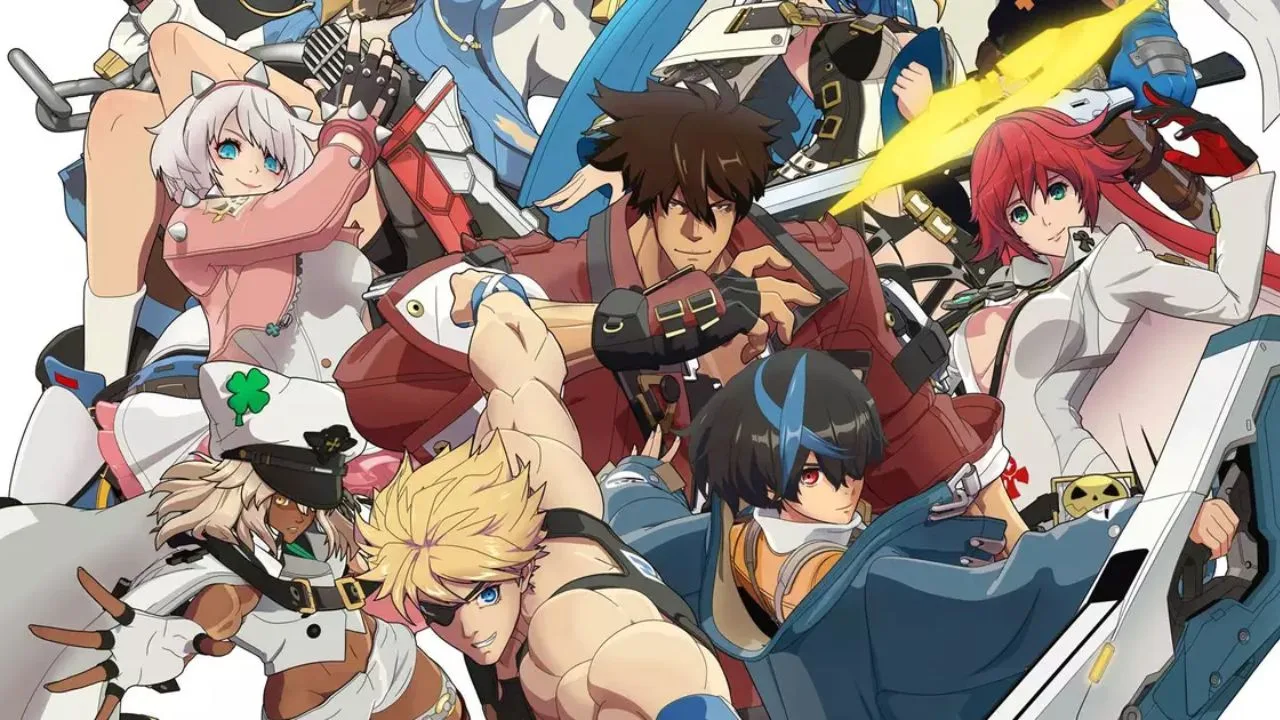The Guilty Gear franchise has been around for over two decades as one of the most creative and iconic fighting games in video games. Created by Daisuke Ishiwatari in 1998, the saga blends heavy rock, magic, science fiction, and thrilling duels with iconic characters. Now, about to receive its first anime, "Guilty Gear Strive: Dual Rulers," which premieres in April 2025 on Crunchyroll, fans old and new are wondering: where to begin?
- Games of the Week: Console and PC Releases Between April 7th and 11th
- Re:Zero closes mobile game after 9 months of release
To follow the story without getting lost, it's important to understand the chronological order of the main games in the franchise, as well as what each one brought to the table. Below, we explain the plots of the main titles and their contributions to the evolution of the Guilty Gear universe.

The birth of magic and Gears
It all begins in the 1990s, when a global technological meltdown paralyzes communication and plunges the world into chaos. A man known only as The Original presents magic as a solution to the crisis. With this, a new era dawns, in which magical energy replaces conventional technology.
In 2015, Project Gear emerged: a scientific initiative aimed at creating magical lifeforms. The plan ultimately produced modified biological beings, the Gears, programmed to obey human orders. However, the first sentient Gear, Justice, rebelled and declared war on humanity, beginning the Crusades—a conflict that lasted a hundred years.
Guilty Gear (1998): The Beginning of the Journey
Five years after Justice's supposed defeat, a tournament is held to find new members of the Sacred Order of the Holy Knights. Sol Badguy, the series' protagonist, wins the tournament and faces a weakened Justice. Thus, the game marks the debut of the air-dash system and the feared moves that eliminate the opponent with a single attack.
With frenetic gameplay and a striking visual style, Guilty Gear gained space by combining manga elements with intense combat.

Guilty Gear X (2000): The Rise of Dizzy
The plot thickens with the appearance of Dizzy, Justice's daughter. Despite her peaceful nature, she is hunted for posing a threat to humanity. Ky Kiske, Sol's rival and leader of the knights, falls in love with her, beginning a forbidden romance.
In terms of gameplay, the title introduces mechanics that have become standard in the series, such as Roman Cancel and the Dust button, in addition to the first ports and revisions.

Guilty Gear XX (2002): Conspiracies and Revelations
Two weeks after the events of Guilty Gear X, the mysterious I-No, servant of "That Man," manipulates several characters, including Sol and Ky. The plot deepens with Dizzy's kidnapping and the rise of secret organizations.
Version XX became known for the various editions released over the years and the addition of MOM mode, which rewards players for creative combos and strategic use of items.

Guilty Gear 2: Overture (2007): The Leap into 3D Action
Breaking with the traditional format, Overture features real-time battles with territorial defense elements. The story takes place years later, with Ky now king of Illyria and father to Sin, raised by Sol. The plot revolves around the emergence of Valentine, a clone of Aria (Justice), and a new global threat.
However, despite the genre shift, the game expanded the franchise's universe, introducing the Backyard, an alternate dimension where the laws of reality are shaped.

Guilty Gear Xrd (2014–2015): the war against the Valentines
Divided into Sign and Revelator, this arc takes place in the late 2180s. Ramlethal Valentine declares war on humanity, followed by Elphelt and other "sisters." Behind them stands the Universal Will, an entity that has manipulated the course of history since the dawn of the magical age.
With innovative 3D cel-shaded graphics that simulate 2D animation, Xrd redefined the look of fighting games. They transformed the story mode into an interactive movie and introduced new characters, such as Jack-O', a key player in the current plot.

Guilty Gear -Strive- (2021): the climax of the saga
Strive concludes the series' main story arcs. Sol confronts his past, while Asuka R. Kreutz (That Man) tries to right the wrongs of Project Gear. Happy Chaos's invasion of the White House sets the stage for decisive battles and emotional resolutions.
In addition to the refined visuals, the game introduced the Wall-Break system, allowing transitions between areas during combat, and tweaks to the mechanics to attract new players without losing strategic depth.

Dual Rulers (2025): the anime that continues the story
Set after the events of Strive, the anime Guilty Gear Strive: Dual Rulers begins with Ky abdicating the throne of Illyria to rule Vialattea alongside Dizzy. The couple decides to formalize the marriage between human and Gear, which generates tension between extremist factions. Then Unika appears, a mysterious figure who opposes the union and promises new conflicts.
Sanzigen will produce the anime and adapt the franchise's visual style for television.

Make the most of Guilty Gear
To fully enjoy Guilty Gear Strive: Dual Rulers, it's worth revisiting the main games in the series, either through the updated versions or by watching the story modes available in the latest installments. The complexity of the plot may seem challenging, but it rewards players with a rich narrative full of twists and turns and captivating characters.
With over 20 years of history, Guilty Gear remains one of the most original fighting game franchises, combining style, a striking soundtrack, and innovative mechanics. Now, with the anime's premiere, it's the perfect time to dive into this universe.


